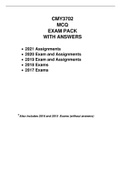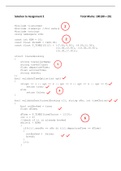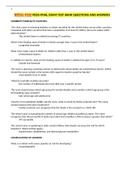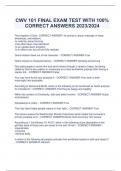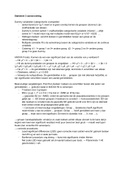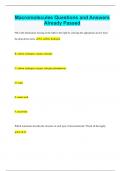Exam (elaborations)
CMY3702 Crime Typologies: MCQ Exam Pack with answers
- Institution
- University Of South Africa (Unisa)
This document contain MCQ with answers from Assignments and Exams dated 2021, 2020, 2019, 2018 and 2017 as well as MCQ from Exams dates 2016 and 2015.
[Show more]
